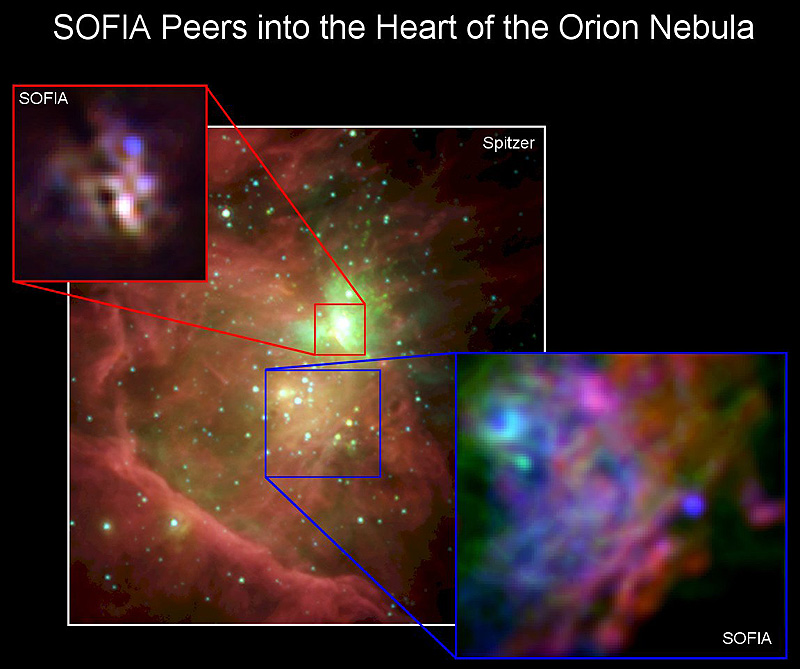This graphical representation from the SOFIA Science Center compares two infrared images of the heart of the Orion nebula captured by the FORCAST camera on the SOFIA airborne observatory’s telescope with a wider image of the same area from the Spitzer space telescope. (SOFIA image — James De Buizer / NASA / DLR / USRA / DSI / FORCAST; Spitzer image — NASA/JPL)
Home This graphical representation from the SOFIA Science Center compares two infrared images of the heart of the Orion nebula captured by the FORCAST camera on the SOFIA airborne observatory’s telescope with a wider image of the same area from the Spitzer space telescope. (SOFIA image — James De Buizer / NASA / DLR / USRA / DSI / FORCAST; Spitzer image — NASA/JPL) This graphical representation from the SOFIA Science Center compares two infrared images of the heart of the Orion nebula captured by the FORCAST camera on the SOFIA airborne observatory's telescope with a wider image of the same area from the Spitzer space telescope. (SOFIA image -- James De Buizer / NASA / DLR / USRA / DSI / FORCAST; Spitzer image -- NASA/JPL)
This graphical representation from the SOFIA Science Center compares two infrared images of the heart of the Orion nebula captured by the FORCAST camera on the SOFIA airborne observatory’s telescope with a wider image of the same area from the Spitzer space telescope. (SOFIA image — James De Buizer / NASA / DLR / USRA / DSI / FORCAST; Spitzer image — NASA/JPL)


